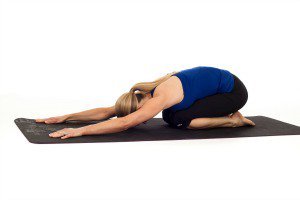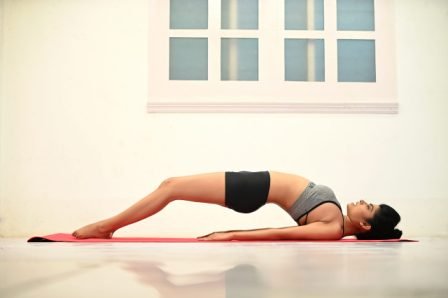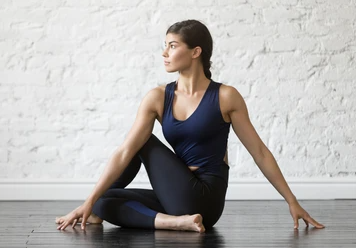Have you been through mental or physical trauma? If yes, then you need to think along the lines to opt for trauma informed yoga. What this kind of yoga does is that it understands the impact trauma can have on the physical and the mental well being of a person. The main objective of this approach is to create a safe environment for all those who have suffered from a trauma.
Importance of a trauma-based approach in making yoga safer and more accessible for trauma survivors
When you opt for trauma informed yoga, then it gives you the freedom to choose the practices as per your choice. The practice tends to respect the boundaries of the individuals and you can choose poses as per your convenience.
The best part is that when you go for trauma informed yoga, then it gives you a chance to reconnect with your body. What is worth mentioning about this yoga is that it respects the cultural sensitivity of an individual. Plus, it helps an individual heal.
Before we go into the yoga practices let us discuss the different kinds of trauma that an individual may suffer from:
Types of Trauma:
- Acute trauma: When we talk about acute trauma, then it is all about short-lived events. Usually when you suffer from short-term trauma, then it causes anxiety, fear and shock.
- Vicarious trauma: When an individual goes through trauma due to their relationships, then it is referred to Vicarious trauma. What happens in this form of trauma is that you may go through emotional fatigue and you may face sleep issues.
- Complex trauma: Well, you may face Complex trauma due to environmental issues. You may suffer from a range of mental problems due to complex trauma. For example, you may suffer from depression.
The Benefits of Trauma-Informed Yoga:
- The positive aspect about Trauma informed yoga is that it helps in regulating the autonomous nervous system
- When you choose to go for trauma-based yoga, then it helps in building resilience in your body. Plus it helps in developing coping skills
- What is worth mentioning about this yoga is that it helps in fostering connection and helps in building community.
Poses of Trauma Informed Yoga:
- Breathing Exercises (Pranayama):
When you are into trauma informed yoga, then it basically involves breath work. For example, you will need to indulge in diaphragmatic breathing. Secondly you also have the option to go for alternate nostril breathing which tends to relax you.

- Child pose:
You can also opt for Child pose. Now, the child pose is a forward fold and it helps in providing you a sense of safety. The best thing about this pose is that it can help to release the tension in your back.

- Bridge pose:
When you perform the bridge pose, then you need to lie on your back and your knees must be bent at this time. Your feet must hip-width apart. What you need to do is that you must lift your hips towards the ceiling. The best thing about this pose is that it can help in releasing the tension that exists in your back.

- Corpse pose:
When you lie on your back in the Corpse pose, then your arms and legs must be extended. The benefit of this pose is that it helps an individual in resting.

- Gentle Twists:
What the Gentle twists do is that they tend to twist your spine from side to side. You can perform this pose while you are seated or you can perform pose when lying down. The best thing about the twists is that they can help to release the tension that may exist in your back.

How Does Trauma-Informed Yoga Heal?
- When you are into trauma infomed yoga, then you will be in a better position to process your emotions. Plus, you will be in a position to create improved emotional resilience when you perform this kind of yoga.
- The best thing about this yoga is that it helps in creating self-compassion. The benefit is that you are in a better position to manage stress.
- When trauma exists in your body, then it portrays itself in the form of physical tension. As a result, you may suffer from chronic pain. What yoga does is that it tends to ease the tension in your body.
Examples of Trauma Informed Yoga Program:
- Progressive relaxation:
When you opt for progressive relaxation, then it helps in releasing the tension in your body. The participants tend to get guided through a systematic approach where they can help release the tension in the muscles
- Guided meditation:
What this program does is that it involves guided meditation. The meditation helps in processing the emotions
- Gentle and accessible poses:
The program involves gentle poses that tend to relax your body.
How to Overcome Challenges Related to Trauma Informed Yoga?
- You must educate yourself regarding trauma informed principles. As a survivor you need to have detailed insight into the process before you take a plunge.
- You must choose a quiet place where you can perform yoga practices. The reason is that it will help to foster a sense of connection.
- When you want to overcome challenges related to trauma, then it is best to offer a flexible and adaptable approach. The benefit of this kind of approach is that it can help to address the unique needs of an individual.
- It is also important that you build trust and rapport with the participants.
FAQ’s about Trauma Informed Yoga!
Q1. What are the elements of trauma informed yoga?
The elements include:
- Safety
- Body awareness
- Empowerment and choice
- Flexibility
- Cultural sensitivity
Q2. How do you make yoga trauma informed?
You need to incorporate the principles of trauma informed care to make yoga trauma informed.
Q3. What kind of yoga is best for releasing trauma?
- Hatha yoga: It involves focusing on gentle-paced movements. You need to emphasize on mindfulness and breath work in this type of yoga. You need to hold the poses for long periods when you perform this kind of yoga.
- Yin Yoga: When you opt for Yin Yoga, then it is all about focusing on long held poses. These poses tend to target your joints and the connective tissues of your body.
- Restorative yoga: When you opt for Restorative yoga, then it is all about using props so that you can relax your body.
Conclusion:
When you are suffering from trauma, then give a chance to your body to relax by opting for trauma informed yoga. It is going to be a life changing experience for you. Give this opportunity a chance and you will not have any regrets.

